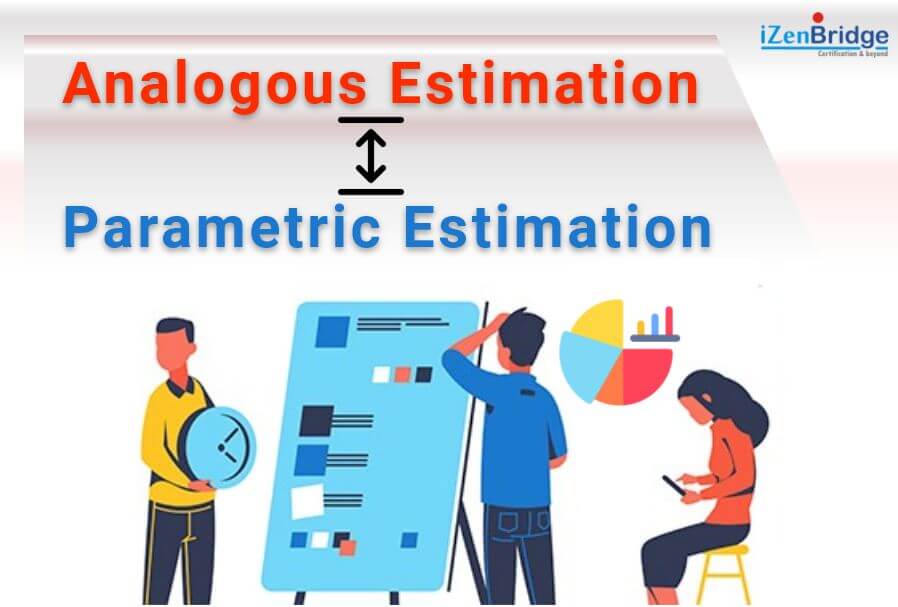

As a Project Manager, doing project ESTIMATION is a key responsibility but how often are we able to deliver the project under budgeted cost and time? Do we have imbibed all the required variables contributing to the cost and duration? The answer could be a combination of both Yes and No which may not be enough to fulfill required commitments. What will help in this scenario would be the right understanding of estimation tools and techniques.
There are many techniques for project estimation like Bottom-Up Estimation, Parametric Estimation and Analogous Estimation.
Both Parametric and Analogous Estimations are the two important techniques which are widely used and are very important topics wrt Project Management Professional (PMP)® Certification. A lot of questions have been seen in exams directly or indirectly related to these topics.
To start with, let’s understand Analogous Estimation, what exactly does it mean?
Analogous as the name suggest it means things which are comparable. In the initial stages of our project when we are not aware of much details about the project then we refer to historical data from the project repository, knowledge Database available to us and check if there is any similar kind of activity done in the past and accordingly estimate the details of new project. We can understand better by the example, For the activity of creation of suit it took 5 days by tailor for the previous project so similarly for new creation of suit project it would take 5 days.
Analogous basically uses top-down approach it means it takes bigger picture and analyse risk, cost accordingly instead of narrowing down each task, that’s why it takes less time and give a rough estimate of the project. Mostly helpful when we need to do initial screening of the project. Like, there are times when your boss needs a rough budget estimate of the projects. As you have done similar type of project in past so basis your expertise in that, you are able to give the cost estimate.
So Analogous estimation can be taken as an expert judgment used for similar projects basis historical data which helps in taking initial decision fast.
While parameter estimation is more accurate estimation techniques compared to analogous estimation as here we take parameter value to do estimates like cost or duration basis per unit cost/duration. It uses the relationship between variables to provide an estimate of cost/duration. here unit rate is used and then parameter or variable value is extrapolated for the new project parameter.
There are two concepts that come in the picture while we study parametric Estimation.
You can understand the above points with an example. In the last project, painter took 8 hours to paint 4 walls. Now in the new project we need to paint 16 walls. So we calculate in last project 4 walls were painted in 8 hours, so to paint 1 wall it took 2 hours. Now we can use this value as a parameter to calculate time for painting 16 walls would (16 *2 hrs= 32 hours). So here we have taken time as a parameter and have extrapolated it to get the total hours to get the exact duration. But we should also consider that if we get any risk like painter is not available then time to resolve those risks should be considered and this can impact total duration (this is done through regression analysis).
So similarly we should also consider that there would be improvement in painting skills of painter and this can be taken as a learning curve for the painter over a period of time.
As we are aware that each project is unique and there are a lot of external factors which can impact the project. So we need to consider variables accordingly.
Comparative details of Analogous and Parametric Estimation
| Sr No | Analogous Estimation | Parametric Estimation |
|---|---|---|
| 1 | provides expert Judgement based on historical data | Provide calculative parametric values based on historical data |
| 2 | Less costly and less time consuming | Takes time as need to do calculation to provide unit level cost |
| 3 | There is less documentation as no calculation is done | Proper Regression Analysis is done |
Below is one of the questions regarding project estimation techniques which can help us in better understanding of the above topics.
You are working on cost estimates of a project and you are the project manager. You got to know that in the past two similar projects have been done and successfully delivered. You approach the PMO department to get the cost performance baselines, lessons learned and other information that can help with your cost estimate. What cost estimate technique are you using?
From the question, we understood that the projects are similar in nature and as there is no information provided related to any cost parameter so Analogous Estimation is the correct cost estimate technique that should be used.
I want to conclude that though both techniques have their pros and cons, so it depends upon the Project Manager when to use which technique basis the inputs he received about the project. If the project is similar to his previous project and he has historical data for his previous project and no more information for the current project is available then I would recommend Analogous for initial costing.
Parametric Estimation is more of a calculation and provides accurate data just the variables used by the team should be appropriate and team should consider learning curve and regression analysis for providing better cost estimates.
Please comment what you think you would use while estimating your project budget?
| Name | Date | Place | – |
| PMP Certification and Training | 17 July – 15 Aug 2025 | Bangalore | More Details |